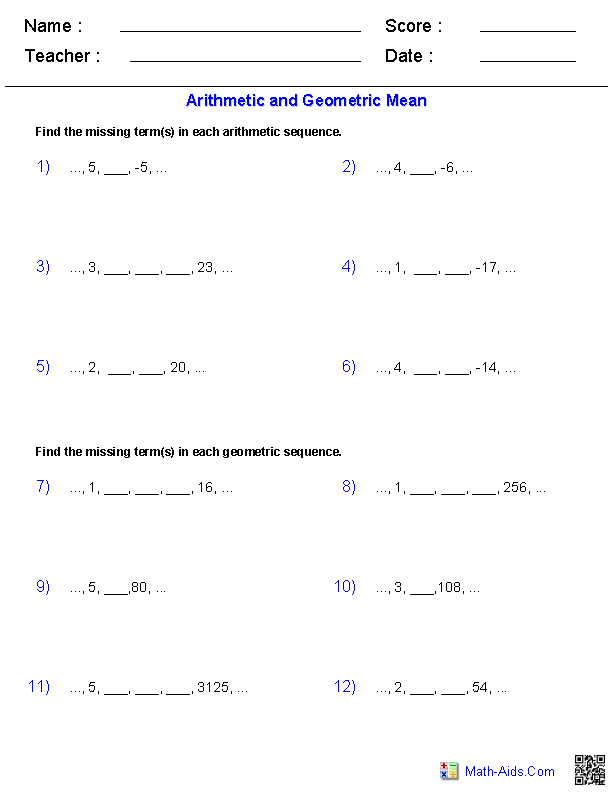

Then describe the rule you are applying each time. 2 Write arithmetic and geometric sequences both recursively and with an explicit formula, use them to model situations, and translate between the two forms. The next three terms of the sequence are \(–16 \times –2 = 32\), \(32 \times –2 = −64\), and \(–64 \times –2 = 128\). Day 1 Arithmetic & Geometric Sequences For the following patterns, find the next two numbers. Representing arithmetic sequences with equations, tables, graphs, and story context (F.BF.1. show that 12 is not a term of the arithmetic sequence 210, 197, 184. Classroom Task: Growing Dots A Develop Understanding Task. Some of the terms of this sequence are surds, so leave your answer in surds as this is more accurate than writing them in decimal form as they would have to be rounded. find the sum to infinity of a geometric series with common ratio r <. Show that the sequence 3, 6, 12, 24, … is a geometric sequence, and find the next three terms.ĭividing each term by the previous term gives the same value: \(\frac\).

In a \(geometric\) sequence, the term to term rule is to multiply or divide by the same value.


 0 kommentar(er)
0 kommentar(er)
